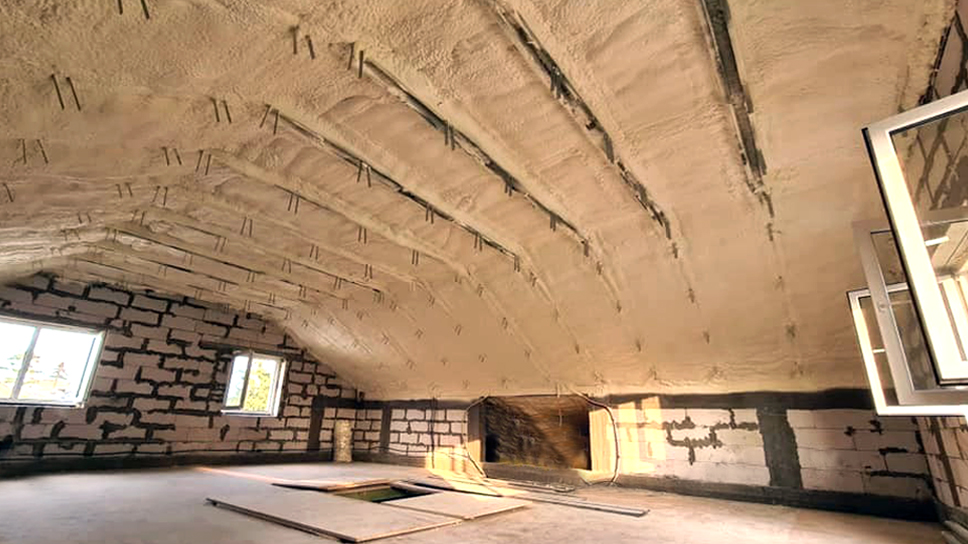When is the best time to insulate a house?
Thermal insulation is one of the elements of house thermomodernization. Is it necessary to proceed with thermal insulation? When should the house be insulated and what material should be used? Thermal insulation is necessary when you want to ensure proper and comfortable living conditions, without worrying about cold winters or hot summers.
The quality and durability of thermal insulation depends mainly on the type of material you select. Polyurethane foam is recommended for house insulation, both closed-cell, e.g. Purios H for insulation of foundations, external walls or basement and open-cell, e.g. Purios E for insulation of attic or internal walls. It is a safe, long-term solution of high quality, distinguished by extremely low heat transfer coefficient. It allows to obtain optimal thermal insulation effects for many years. When should the house be insulated and do weather conditions affect thermal insulation?
Is it worth insulating a house in winter?
Many people interested in applying thermomodernizationwonder as to when to insulate a house. Is it worth carrying it out in winter? Spray insulation requires the right conditions to be met in order to achieve desired results. That is why we do not recommend doing such works on your own - without proper knowledge and equipment, as temperature fluctuations, precipitation and associated high humidity make it difficult to achieve optimal results.
Interior spraying can be carried out in both summer and winter. However, it is worth remembering that the temperature of the surroundings and surface at the moment of the foam application and several hours after finishing the works cannot be lower than 15oC. When should insulation of a house be performed and what are the most favourable conditions for it?
Insulating a house in spring or summer
Do you wonder what kind of weather is favourable for thermal insulation and when to insulate a house? The best time of the year is spring and summer when the temperature is between 20 and 30oCand relative air humidity prevails. This applies to both the substrate, the surface and the products used for insulation and renovation. By what time can the house be insulated? Provided that the right conditions are met, spray foam insulation of a house can be performed all year round.
When should house insulation be carried out? Weather conditions have no direct impact on spray work carried out indoors. However, it is very important to choose the right professionals who will advise the right time to start the work, taking into account all external and internal factors.
An experienced professionals hired by the company dealing with spray insulation know very well which aspects have to be fulfilled in order to properly perform the foam spraying, and they have the right equipment that allows them to obtain favourable conditions regardless of the season. That is why it is a good idea to entrust the planning of insulation works to suitably qualified specialists who are familiar with their profession, so that the modernisation carried out brings the expected results.
When should the attic be insulated?
The insulation of the attic, both non-utilitarian and utilitarian, is a key element for effective thermomodernisation. It determines the comfort of life for the inhabitants and reduces the need for additional heating. When should the attic be insulated? Once the roof structure and its covering have been prepared. It is necessary to ensure that the entire surface of the attic is free of moisture - its proper drying is the most important issue.
When should the attic be insulated in newly built houses? After applying plasters and screeds it is worth waiting and allowing all products to dry properly. Then you can be sure that the construction will be stable, strong and durable, and spraying polyurethane foam will become its additional protection. On the other hand, if the open -cell foam is applied before plastering and screeding or other wet works, the foam should be covered with vapour-barrier foil after the works have been completed in order to prevent dampness from penetrating the foam structure and further into the wooden roof structure.

 This website uses cookies. By using this website, you consent to the use of cookies in accordance with your browser settings.
This website uses cookies. By using this website, you consent to the use of cookies in accordance with your browser settings.